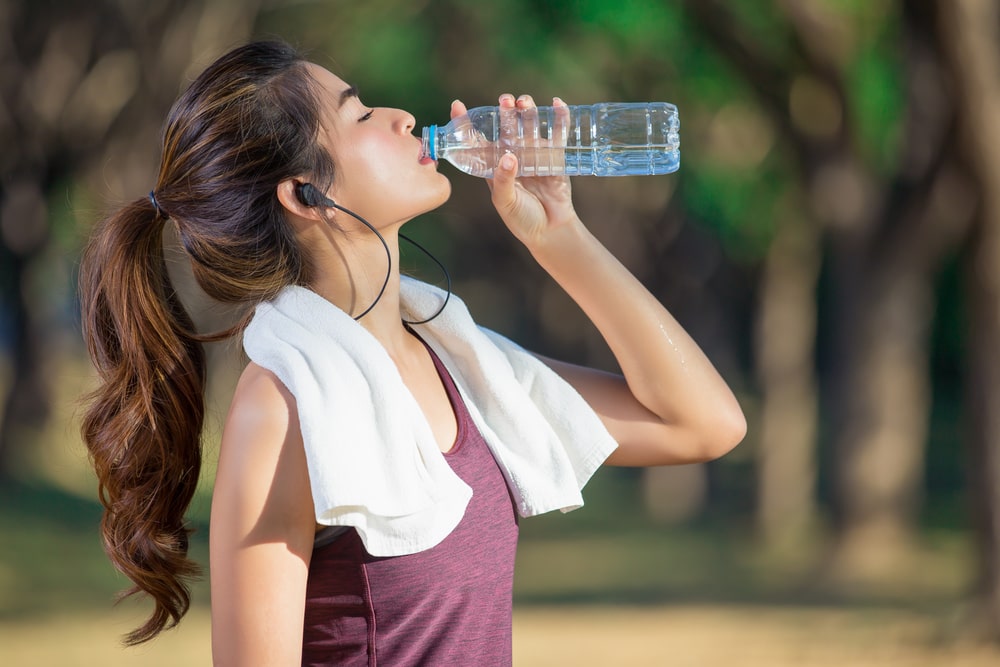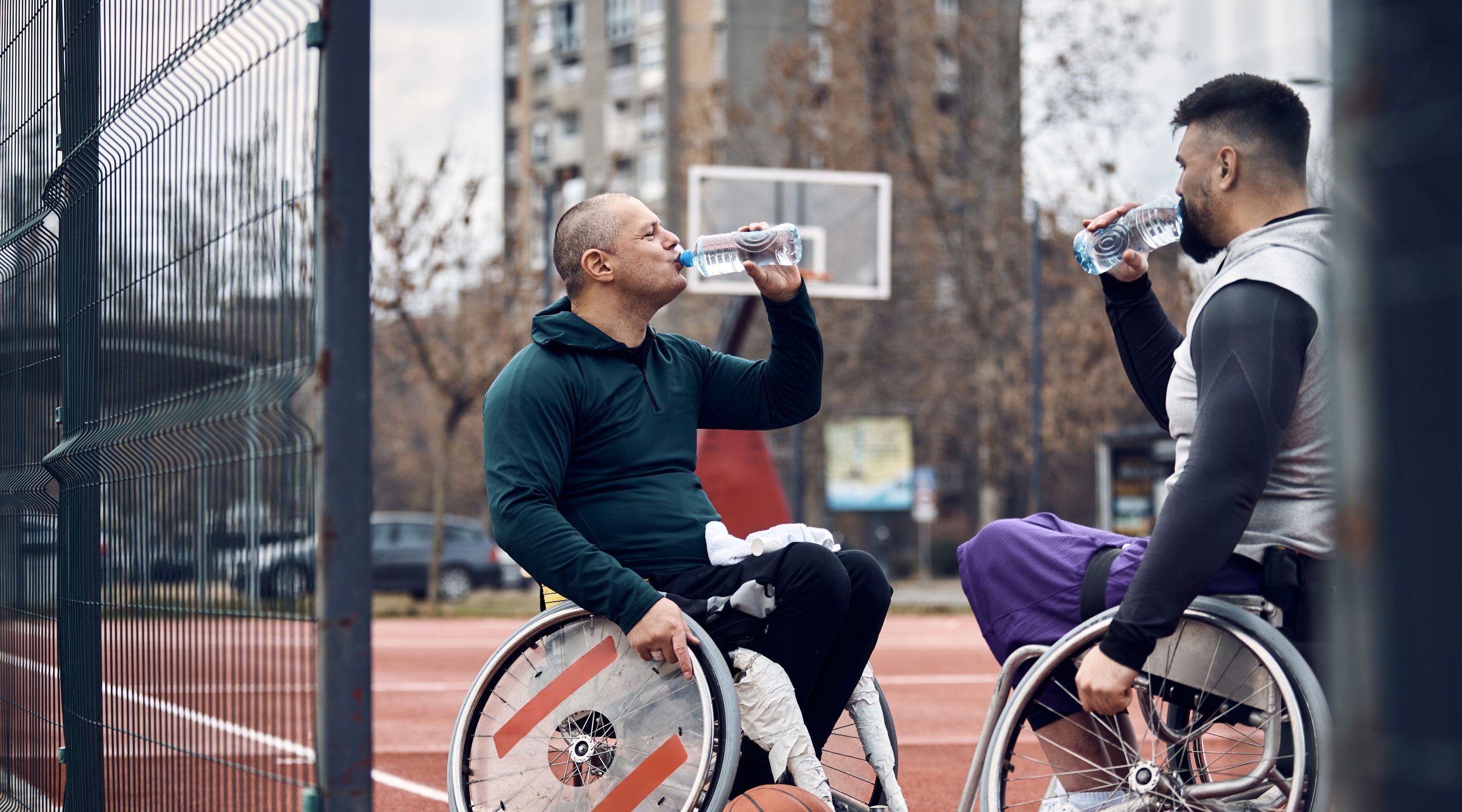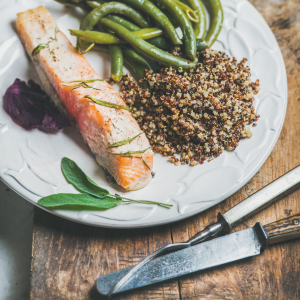Did you know 50-60% of your body weight is made up of water1? Every cell, tissue and organ in your body needs water to work properly. More specifically, your body uses water to transport nutrients, maintain a normal body temperature, remove waste and keep your joints lubricated, among other important functions. This means proper hydration is critical for your overall health.
How hydration works
Most water in your body is found in two compartments: intracellular (within cells) and extracellular (outside cells). The two main extracellular compartments are the intravascular compartment (i.e., where plasma – the fluid component of blood – is found) and the interstitial compartment (i.e., which contains fluid not found in cells or plasma).
Fluid moves freely between the intracellular and extracellular (specifically intravascular and interstitial) compartments. One reason for this is osmosis, the process where water moves from areas of high to low concentration to balance water (or fluid) levels on both sides of the cell membrane, which is semipermeable. It’s thanks to this osmotic pressure that your cells – and by extension, you – become hydrated. For more information on how hydration works, check out this resource.
How much water should you drink per day?
Daily water intake recommendations depend on your age, sex and body weight, and whether you’re pregnant or breastfeeding. For example, according to the National Academy of Medicine, men need a minimum of 3.7 litres (L) per day and women need 2.7 L per day, and these amounts increase if we’re exercising or in warm climates.
What dehydration means
Every day when you pee, poop, sweat and breathe, you experience water loss. It happens faster in hot weather, when you’re sick with a fever, after vomiting or having diarrhea, and when you’re physically active. Dehydration is a loss of 4% or more of your total body water (TBW). When you’re dehydrated, your body doesn’t have enough fluids to function properly.
3 ways to check your hydration level
To get an idea of how hydrated you are, you can rate your thirst level, check your pee or calculate your sweat rate.
- Thirst level: When you first wake up and before you exercise, eat or drink, rate your thirst on a scale of 1 to 9, where 1 means “not thirsty at all” and 9 means “the thirstiest you’ve ever been”. If you feel “very thirsty,” you’re probably mildly dehydrated. This rating can act as a good baseline during the day.
- Pee: If you don’t have to pee at least every three hours or so, it likely means you aren’t hydrated. You can also look at your pee colour. Typical rule of thumb: pale-yellow pee means you’re well-hydrated; darker, sunflower-yellow pee suggests that you’re normally hydrated or slightly dehydrated, and mustardy yellow or brownish pee is a sign of dehydration.
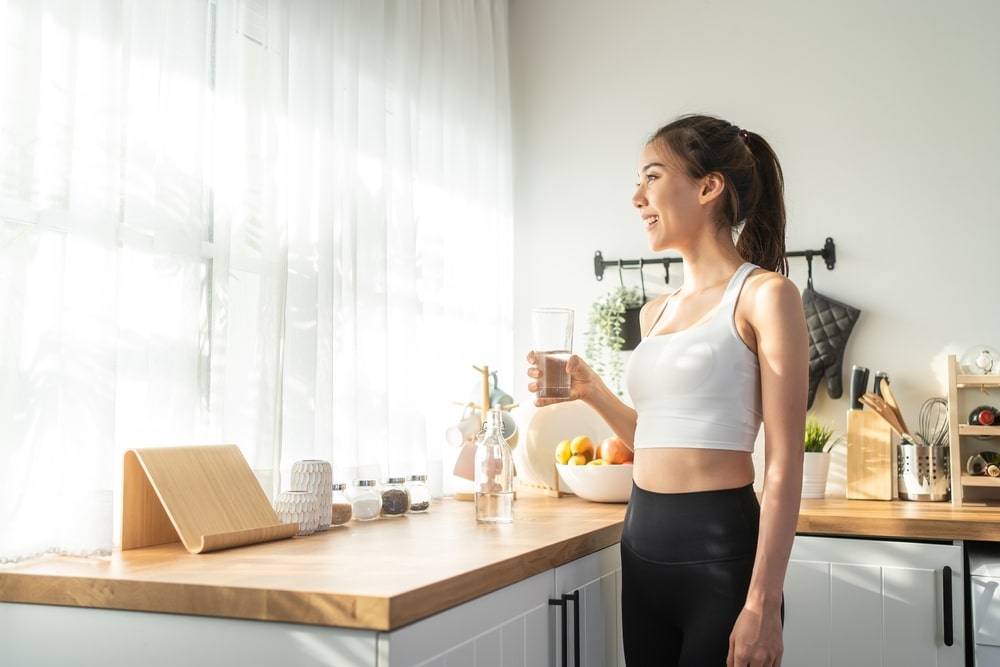
3. 30-minute sweat rate test:
-
- Empty your bladder, then take your unclothed weight in kilograms (kg).
- Exercise for 30 minutes.
- Take your unclothed weight again.
- Subtract your after-exercise weight from your before-exercise weight, then multiply the difference by two to get an approximate measure of your sweat rate in L per hour.
- If you drink any fluids before your workout, simply add that amount to the difference in weights from the previous step. For example, if your weight before exercising was 72 kg and your weight after is 71 kg, and you didn’t drink anything before the workout, your sweat rate is 2 L/hour. If the weight difference is 500 grams (g) and you drank 250 mL of fluid beforehand, add that to the 500 g for a loss of 750 g or a sweat rate of 1.5 L/hour.
Why hydration is important for exercise
Whenever you exercise, your body temperature rises, and you sweat to try bringing it back to an ideal temperature (a process called homeostasis). As sweat evaporates from your skin, it cools you down, but you also lose fluid in the process. This means you must drink water or other fluids to replace this lost fluid.
When you’re planning to exercise for more than two hours or in high temperatures, you should ensure you’re euhydrated (optimally hydrated) – neither hypohydrated (at a TBW deficit) nor hyperhydrated (with an excess of TBW). This is especially important if fluid and sodium loss through sweat is high. Being euhydrated prevents your heart rate from rising too much, helps your blood pump more efficiently, increases your endurance and improves your exercise performance.
Starting your workout session hypohydrated will negatively impact your performance because the lack of water increases your heart rate, how hard you feel like you’re exerting yourself and your thirst level. Dehydration decreases endurance exercise performance and reduces the amount of time it takes before you feel exhausted2.
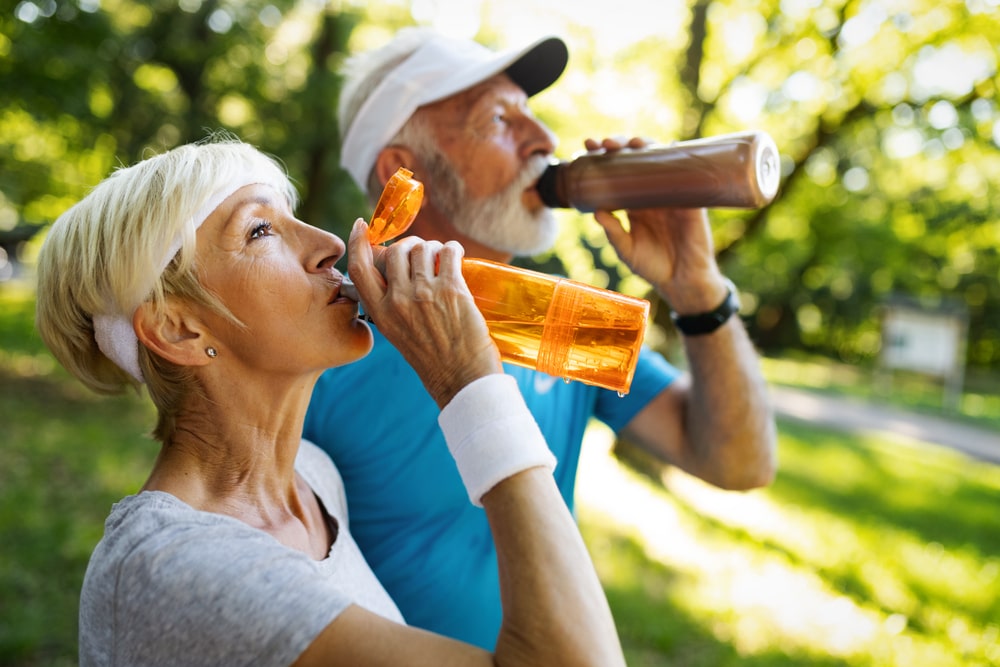
But is there such a thing as drinking too much water?
- Being hyperhydrated doesn’t improve performance either and can even, in severe cases, lead to a rare, life-threatening condition known as exertional hyponatremia (when sodium levels in your blood are below normal)3.
- Symptoms include bloating, headache, confusion and vomiting. Exercise also causes your blood to move to active muscles, decreasing kidney filtration and pee production, which makes it more difficult for your body to combat an overload of fluid in the absence of any electrolytes – electrically charged particles (ions) that come from salts dissolved in water.
What can hydrate you besides plain water?
Although plain water is generally the best option because it’s readily available, calorie-free and usually free of charge, other drinks and even foods can contribute to your daily total water intake, too. Other sources for hydration include:
- Carbonated water
- Seltzers
- Juices
- Many fruits and vegetables
- Milk
- Herbal teas
But it’s best to limit drinking too many sugary, high-calorie drinks wherever possible.
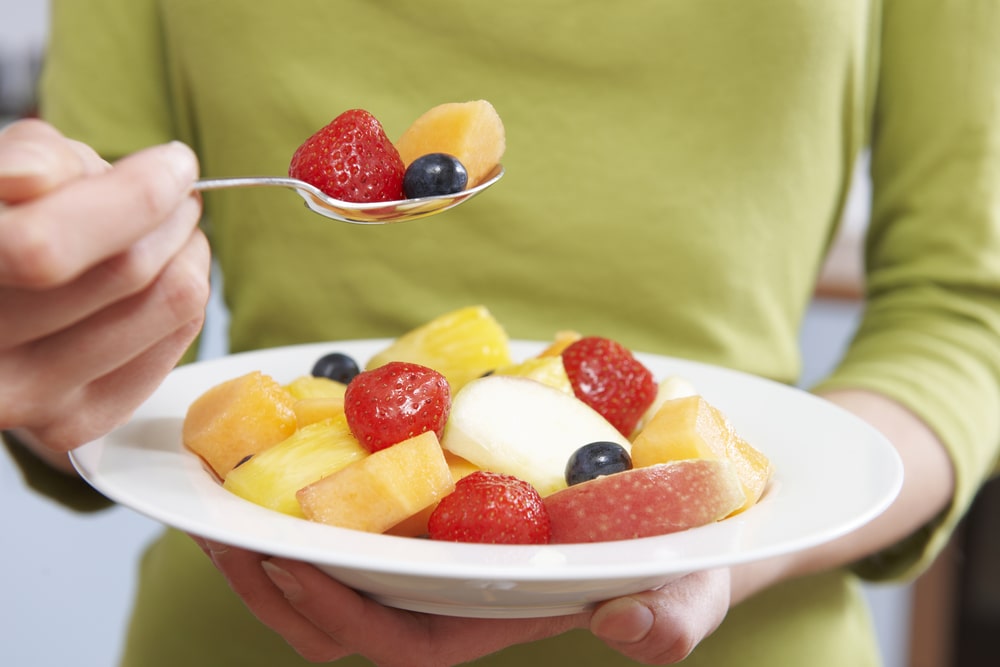
Are sports drinks good for hydration?
Sweating not only causes you to lose water but also electrolytes. Examples include sodium, potassium and magnesium. Electrolytes are important for rehydration (i.e., fluid replacement) and help manage nutrient absorption, waste removal and water distribution throughout your body.
Sports drinks like Gatorade, Powerade and Pedialyte help if you’re doing moderate-to-vigorous activity for over an hour or under hot conditions because they have carbohydrates and electrolytes that can refuel your body, boost your energy levels and help your body absorb water. That said, some sports drinks have lots of calories from added sugar, as well as high sodium levels.
You can also add and mix electrolyte powders or tablets with water or drink coconut water, which replenishes potassium, sodium and manganese. However, coconut water usually has less sodium than sports drinks, making it less effective if you’re doing a long and vigorous exercise session.
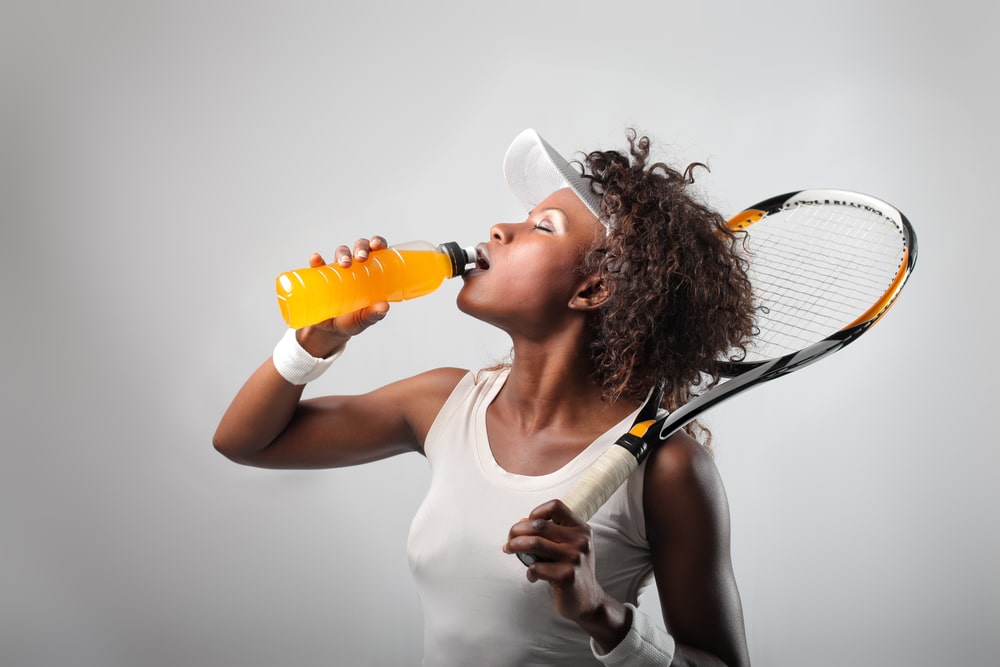
How much water should you drink before, during and after exercise?
- Drink approximately 450 mL of fluid within two hours before exercising.
- Drink about 250 mL of fluid approximately 20 to 30 minutes before starting your workout.
- Drink 250 mL of water every 10 to 15 minutes during an exercise session. Bringing a water bottle (ideally reusable and refillable) with you wherever you’re getting active is a great idea.
- Drink 350-700 mL of water after your workout.
The amount of fluid you drink depends on the temperature, humidity, exercise exertion level and how much you sweat. We sweat more in hot and humid conditions and with increasing exercise intensity, so make sure not to leave home without a hydrating drink!
